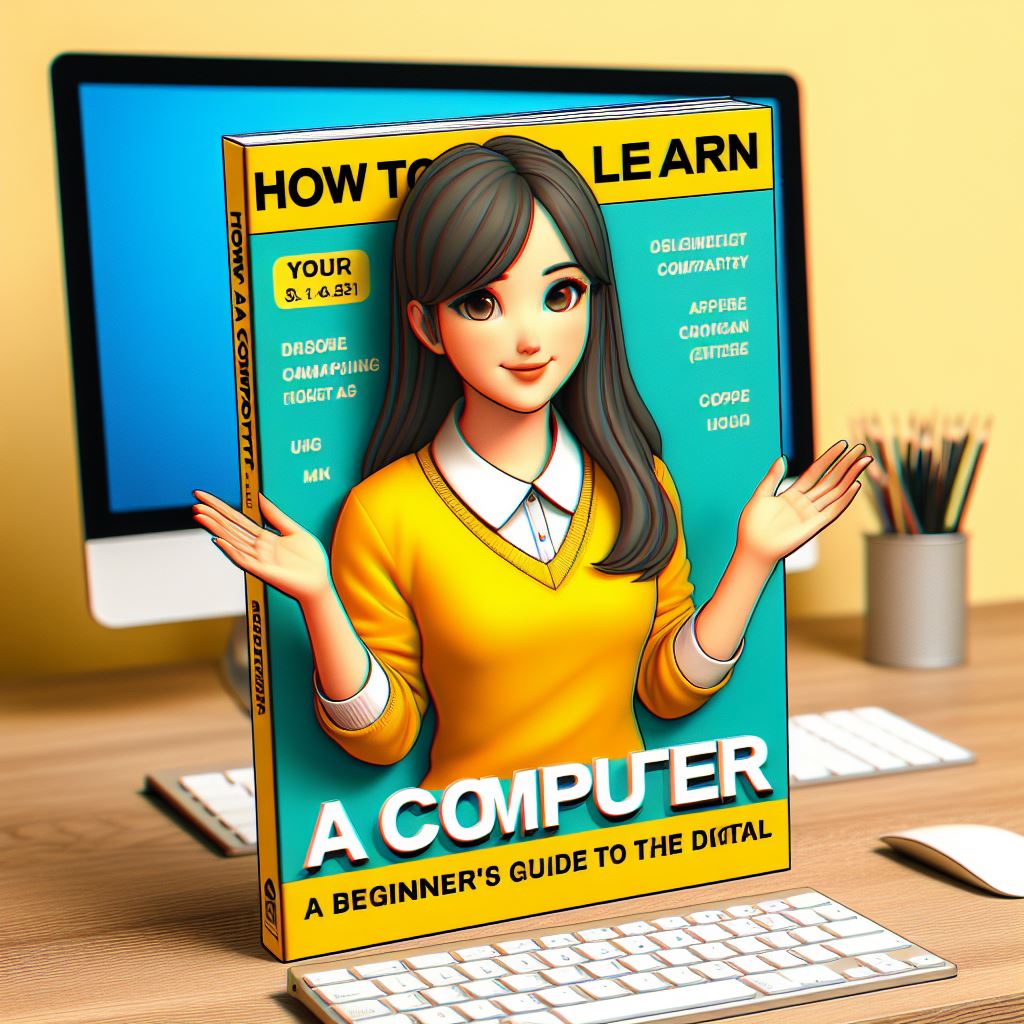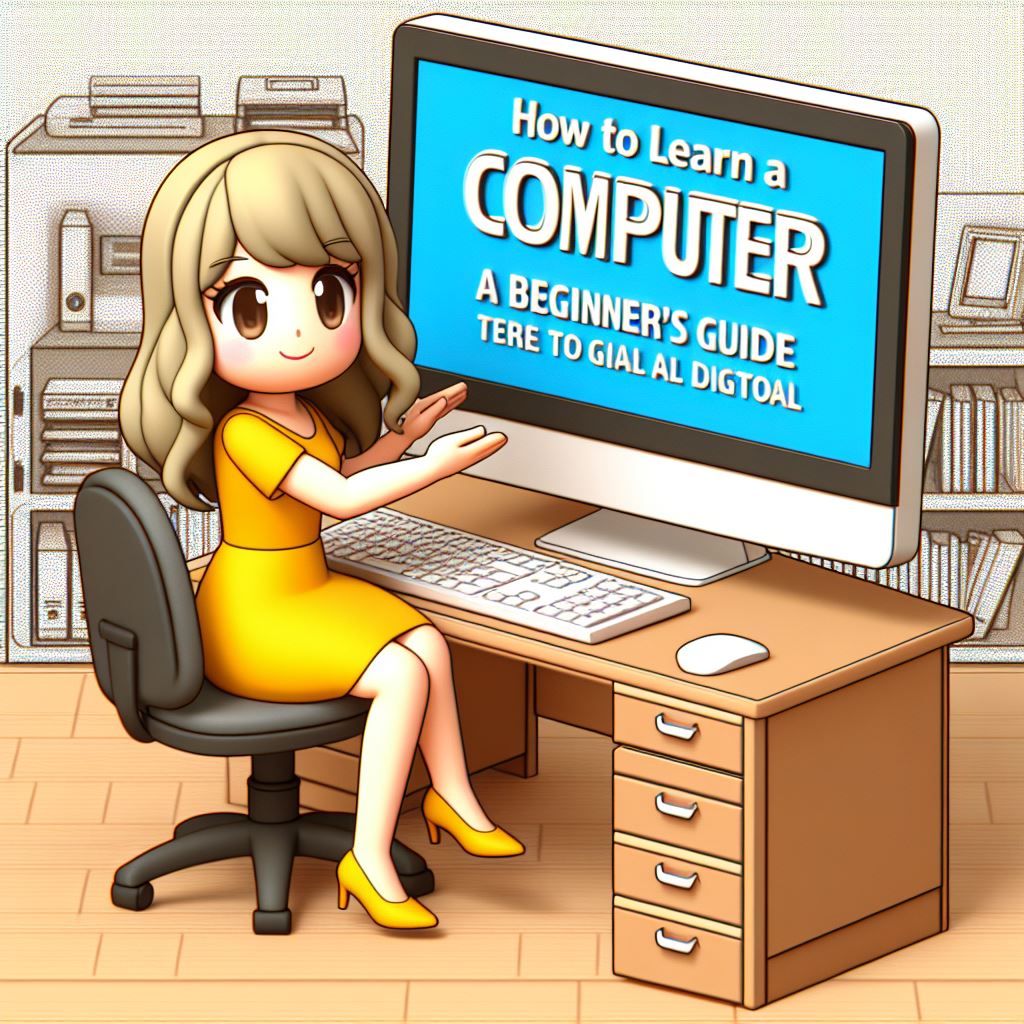
What is the Capacity of the Tata T7 Ultra? A Deep Dive | 0179
The PC has turned into an unquestionable foundation of current life. These powerful machines influence nearly every facet of our daily lives, from entertainment and communication to work and education. However, navigating the complexities of a computer can feel overwhelming to those who are new to the digital world. Dread not! This far reaching guide will furnish you with the information and moves toward certainly leave on your PC learning venture.
Demystifying the Machine: Understanding the Basics Before getting into the intricacies of software, let’s first understand what a computer is made of physically. The essentials are as follows:
- Equipment: These are the substantial parts you can see and contact. They collaborate on a variety of projects. Normal equipment parts include:
- Focal Handling Unit (CPU): Frequently alluded to as the “mind” of the PC, the computer chip executes guidelines and performs estimations.
- Memory (RAM): This impermanent stockpiling holds information presently being utilized by the PC. Storage (Hard Drive and Solid State Drive): This is where every one of your records, reports, and projects are for all time put away.
- Devices for Input: You can use these to interact with the computer, like a touchscreen, keyboard, or mouse. Output Equipment:* These showcase data handled by the PC, similar to the screen or printer.
- [Software]: This is the assortment of projects and guidelines that instruct the equipment. There are two fundamental classifications:
- Working Framework (OS): This is the core software that paves the way for other programs to run and manages all of the computer’s resources. Famous working frameworks incorporate Windows, macOS, and Linux. Apps (applications): These are individual projects intended to perform explicit assignments, similar to word handling, web perusing, or video altering.
Acclimating Oneself to the Hardware: Involved Practice
Since you have an essential comprehension of the equipment, now is the right time to look into the actual parts. A useful guide is provided here:
- Put the computer on: Find the power button, generally on the facade of the case for work areas or as an afterthought for PCs. Press the button and trust that the PC will boot up (begin).
- Using a Trackpad or Mouse: A mouse is a handheld gadget with buttons that you roll on a level surface to control the cursor (pointer) on the screen. Make use of the trackpad, a surface that responds to touch and resembles a mouse for laptops. Work on moving the cursor around and tapping on symbols or text.
- Investigating the Keyboard: Locate the keyboard and become familiar with the keys’ arrangement. Most consoles have standard formats with letters, numbers, accentuation imprints, and extraordinary capability keys. Begin by practicing typing short phrases and words.

Exploring the Product: Investigating the Working Framework
The working framework (operating system) is the graphical connection point you collaborate with to get to documents, projects, and settings. Here is a breakdown of some center functionalities:
- Desktop: When you first log in, you’ll see this as the main screen. Icons for applications, files, and folders are typically displayed.
- Dock (macOS) or Taskbar (Windows): This bar at the lower part of the screen (Windows) or side of the screen (macOS) gives speedy admittance to much of the time utilized applications and highlights.
- Begin Menu (Windows) or Locater (macOS): This menu permits you to send off programs, look for documents, and access framework settings.
- Windows (Windows) or Applications Envelope (macOS): This envelope contains all your introduced applications.
Presently, how about we investigate essential activities you can perform:
- Programs for Opening and Closing: Click on the program symbol on the work area, taskbar/dock, or Applications envelope to send off it. Whenever you’re finished, you can generally close the program by tapping the “X” button in the upper right corner of the window. ‘Minimizing and Extending Windows’: Click the limit button (“_”) to contract a program window and keep it on the taskbar/dock for later access. Click the boost button (“▢”) to extend the window to fill the whole screen.
- Moving and Resizing Windows: To move the window around the screen, hold down the title bar (the bar at the top of the window) and drag it. Snap and hold the base right corner of the window and drag it to resize it.
- Making and Overseeing Files: To create new files or folders, right-click anywhere on the desktop or inside a folder. By right-clicking on a file and selecting the desired option, you can rename, move, or delete it.
Fundamental Abilities for the Advanced Age: Mastering the Basics (Continued) Now that you understand how computers work fundamentally, let’s look at some essential skills that will help you confidently navigate the digital world:
- Utilizing the Internet: The web is a huge organization of associated PCs that permits you to get to data and speak with others around the world. To begin, follow these steps:
- Web Browsers: These are programming programs that permit you to get to sites on the web. Chrome, Firefox, Safari, and Edge are among the most widely used web browsers. Figure out how to open an internet browser, explore to a site utilizing its location (URL), and quest for data utilizing web search tools like Google or Bing.
- Email: You can send and receive messages electronically using email. Investigate your email program and work on making, sending, and answering to messages. Important File Management: It is essential to cultivate good habits now that you are able to create and manage files. Figure out how to arrange your records utilizing organizers with clear names. Consistently back up your significant documents to an outside hard drive or distributed storage to forestall information misfortune.
- Remaining Safe Online: The web can be a gold mine of data, but at the same time it’s fundamental to know about likely dangers. Some precautions include: Be careful when downloading:* Just download records from confided in sources. Abstain from tapping on dubious connections or opening connections from obscure shippers.
- Powerful Passwords: Make solid passwords for your web-based accounts. Long, one-of-a-kind, and composed of upper- and lowercase letters, numbers, and symbols, a strong password is secure. Consider utilizing a secret key supervisor to help you make and oversee complex passwords.
- Be careful with scams: Unsolicited messages, calls, or emails that promise free prizes, quick riches, or dire consequences should be avoided. Don’t give out personal information to people you don’t know.
Past the Nuts and bolts: Investigating Various Applications
PCs offer a different scope of uses taking care of different necessities. A few examples of common uses are as follows:
Processing Words: You can create, edit, and format text documents with these applications, like Microsoft Word or Google Docs, which are ideal for writing letters, reports, or essays.
- Spreadsheets: Data can be organized and analyzed in a grid format using spreadsheet software like Google Sheets or Microsoft Excel. They are ordinarily utilized for planning, making outlines, and performing estimations.
- Presentations: Show programming (like Microsoft PowerPoint or Google Slides) works with making media introductions with slides, message, pictures, and recordings, ideal for making introductions at school, work, or gatherings.
- * Web surfing: As examined before, internet browsers are fundamental instruments for getting to the web. Get to know different program functionalities like bookmarks (saving most loved sites for simple access), tabs (opening various sites all the while), and in disguise mode (perusing secretly without saving history).
- Applications for multimedia:** These applications permit you to appreciate sight and sound substance like music, recordings, and pictures. VLC media player and Windows Media Player are two well-known media players.
- Specialized Tools: Correspondence applications like Skype, Zoom, and Google Meet empower video conferencing and online calls, cultivating correspondence and coordinated effort continuously.
Learning a few essential functionalities of these applications will significantly upgrade your PC education. To get you started, most software has built-in tutorials or online guides. Make sure to and explore.

Deep rooted Learning: Staying up with the Advanced World
Innovation is continually advancing, so the learning venture never genuinely closes. Here are some suggestions for staying current and proficient:
- Online Resources: Free educational resources abound on the internet. Make use of websites that are devoted to the improvement of computer skills, video courses, and online tutorials.
- Practice Makes Perfect: The more you utilize your PC, the more agreeable you’ll turn into. Feel free to try and investigate various functionalities. Practice routinely to harden your abilities.
- Embrace Curiosity: Don’t be afraid to ask questions. If you’re having trouble, ask for help from your friends, family, or online communities. In the world of the digital age, there is always someone willing to help.
- Remain Updated: Innovation is continually advancing. Keep yourself informed about significant updates or new elements in programming or equipment through tech news sites or online discussions.
Keep in mind that learning how to use a computer is an enjoyable journey that opens up a world of possibilities. With devotion, practice, and a bit of interest, you’ll explore the computerized world with trust in a matter of seconds.

